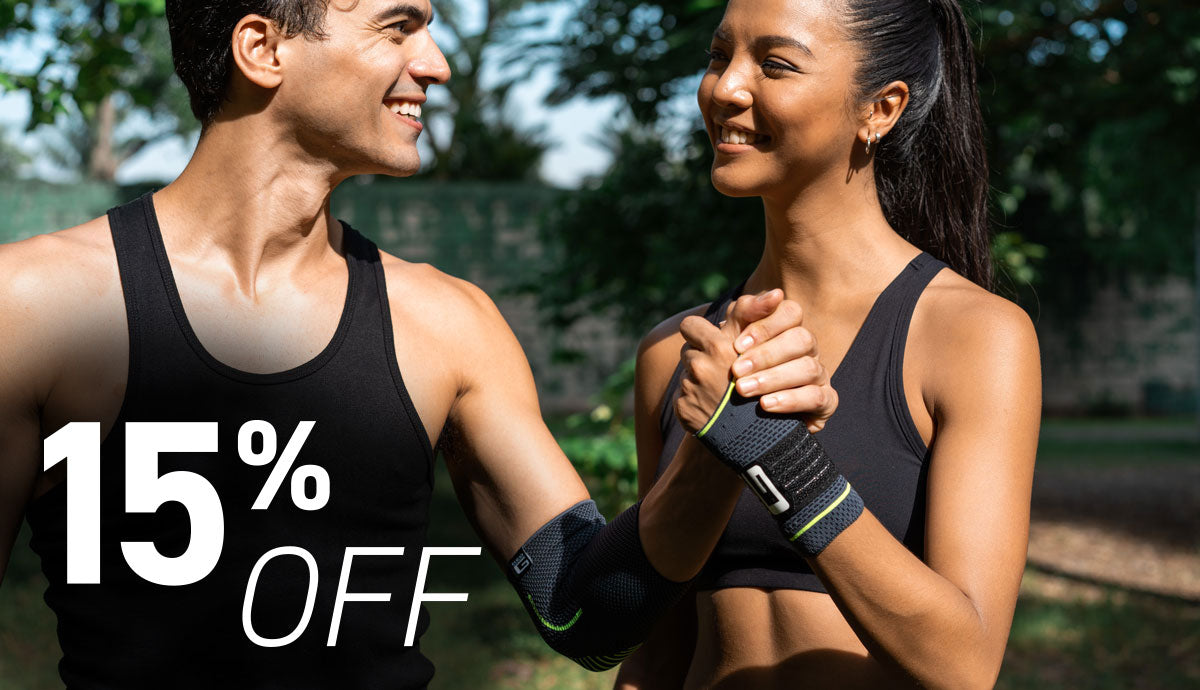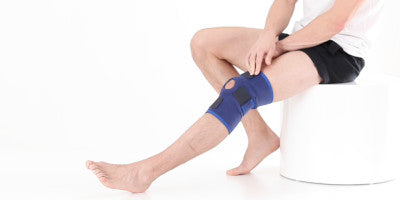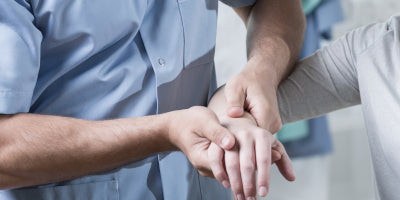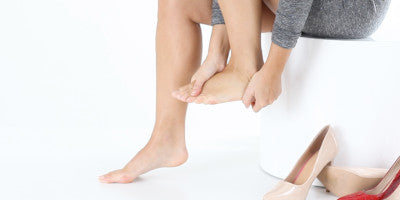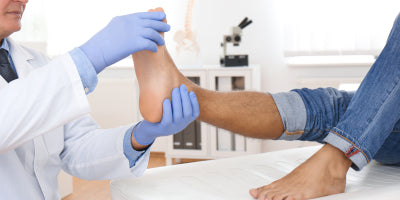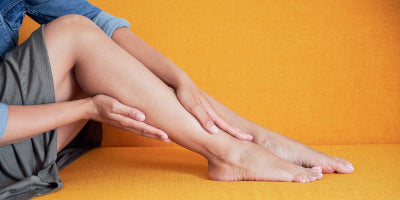Common Tennis Injuries And How To Treat Them

We’ve all done it. We’ve been inspired to get out there and try our hands at a sport either for the first time or as an effort to get back into it. As we’ve thrown ourselves into the fray, we’ve over done it and injured ourselves. This is a common occurrence for those who are at the beginning of their sport playing journey and it is no different with tennis. Tennis is a great sport for all ages to enjoy and in summer, the better weather and lighter nights mean it can be a great activity to do with friends and family, winding down after a busy day at work or school.
It is estimated that just an hour’s game of singles tennis can burn over 400 calories for both men and women, making it a great activity for losing weight and improving your overall fitness levels. As well as physical benefits, tennis also helps to exercise your mind and muscle connection especially your concentration, reaction times and hand-eye coordination – a great combination for keeping active later in life. Tennis is also great for children as it helps with concentration and discipline, as they try to keep the ball within the tennis court as opposed to just hitting the ball anywhere they want!
How to avoid Tennis Injuries

Obviously, the best way to treat common tennis injuries is to avoid them all together! Understanding the potential for injury while playing tennis is a large part of this. Tennis involves lots of repetitive swings in a short period of time, which, even if you have the perfect technical swing can put extra stress on your muscles, ligaments and tendons specifically those around the shoulder elbow and wrist. The repetitive nature can lead to a common injury called ‘tennis elbow’ (more on this below) which is caused through tiny tears to the muscles that attach to the outside of the elbow joint causing inflammation in this region. This causes pain on the outside of the elbow that can also be felt in the forearm as well through various task such as gripping small objects and bending your arm.
A preventative step for avoiding tennis elbow, particularly if you have an already weak joint, is to wear a support. The Neo G Active Elbow support offers mild to moderate support via targeted Multi Zone Compression. Knitted with a lightweight breathable fabric, it is ideal for tennis in the summer weather! If you have suffered from this injury in the past, stronger support may be needed. The Neo G Airflow Plus Elbow Support provides moderate to firm support via Multi Zone Compression. Additionally, premium quality silicone cushions (on either side) help support and protect elbow and reduce impact/vibration on joint.
Before playing, check the condition of the surface you are playing on and adapt to that environment. If you are finding it particularly slippery, then rather than sprinting and changing direction sharply (inviting opportunity for injury) why not play a smaller court game and work on technique?
As with all exercises, warming up and cooling down is essential and one of the best ways to do this in tennis is to do a gentle rally with your opponent going through all the different types of shot you may play during a match but at a slower controlled pace.
Finally, know your limits and listen to your body. Just because you were able to play a two hour game a week before doesn’t mean this time you will be able to do the same this time. Many factors could have changed since the last time you played; from a change in temperature to you being more active prior to your match, so if you are feeling tired take a break. Most avoidable injuries to yourself will be caused when you are tired and your body tries to compensate to do a movement with other weaker muscles.
If you do find yourself injured however, read the injuries listed below and if they sound like what you may have, follow the instructions for a safe and quick recovery!
TENNIS ELBOW (LATERAL EPICONDYLITIS)
Tennis elbow is a common cause of lateral (outside of the elbow) elbow pain, which can also radiate down the forearm. It is aggravated by gripping activities and so is common in people who do a lot of activities where there is a lot of lifting and using the fingers and wrist.
Common Signs and symptoms of Tennis Elbow
Common signs and symptoms of tennis elbow include:
- Pain on the outside of the elbow
- Pain with gripping activities
- Pain on touching the outside of the elbow
- A weak grip
How to treat Tennis Elbow
If you think you’re suffering from tennis elbow, you should:
- Consult your doctor or physiotherapist
- Protect the elbow by reducing the amount of activity you do
- Elevate your elbow
- Use compression via a support or tape
- Our Neo G Tennis/Golf Elbow Strap includes an inbuilt vibration dampening pad to help relieve the painful symptoms of tennis elbow
- Slowly increase the load on the elbow joint as it recovers, without causing pain. If you cause pain, you’re loading too much.
- Increase aerobic exercise through possible means. Increased fitness increases blood flow to injured areas.
INVERSION LIGAMENT SPRAINS
Sprained ankles are the most common ankle injury sustained during sport. The lateral ligament complex is made up of 3 ligaments which can be torn or ruptured when you forcibly roll over (invert) on your ankle. When this occurs the ankle will be extremely painful, you may not be able to walk on it and it will become very swollen.
Common Signs and symptoms of a sprained ankle
Following a sprained ankle, the common signs and symptoms are:
- Immediate pain and swelling of the lateral ankle and foot
- Pain on weightbearing or unable to weight-bear
- Decreased range of movement of the ankle
How to treat a sprained ankle
If you think you have a sprained ankle, you should:
- For severe sprains attend A&E for an assessment as you may need an X-ray to rule out a fracture
- For moderate & minor sprains consult your doctor or physiotherapist
- Protect your ankle by reducing the amount of activity you do
- Elevate your ankle
- Use compression via a support or tape
- The severity of the ankle sprain will determine how long it takes for the ankle to recover and for your to return to sport. Ligament sprains are classified as:
- Grade 1 – minor strain of the ligament. Return to sport between 2-4 weeks
- Grade 2 – partial rupture of the ligament. Return to sport between 6-12 weeks
- Grade 3 – complete rupture of the ligament. Return to sport – seek physiotherapist or orthopaedic consultant opinion.
As your sprain recovers and your range of motion improves you will be able to start to walk and run on your ankle. As you start to return to sport you may find an ankle support useful to provide flexible support to the joint.
DE QUERVAINS TENOSYNOVITIS
This is a condition that affects the muscles that move the thumb causing pain and stiffness around the base of the thumb. The condition causes pain every time you turn your wrist, grasp anything or make a fist. The tendons that are commonly affected are the extensor pollicis brevis and the abductor pollicis longus.
Common signs and symptoms of De Quervains Tenosynovitis
- Pain around the base of the thumb when gripping
- Swelling around the base of the thumb
How to treat De Quervains Tenosynovitis
- Consult with your doctor or a physiotherapist
- Protect your ankle by reducing the amount of activity you do
- Try taping the area or wearing a support to stop you from moving your thumb and wrist too much
- Elevate your ankle
- Use compression to help reduce swelling
- Slowly increase the load on the thumb and wrist joint as it recovers, without causing pain. If you cause pain, you’re loading too much.
- Increase aerobic exercise through possible means. Increased fitness increases blood flow to injured areas.
We hope you don't need any of this advice and your tennis is fun and injury free! If you are injured however seek advice from your GP and take a look at our range of tennis supports. With all information, please check that it is relevant to your individual circumstances and if you are ever unsure check with a medical professional.

For support in everyday activities, the Airflow and Airflow+ ranges offer lightweight, slimline supports that protect and reduce the impact on joints and muscles. Perfect for taking a walk, playing sport or support with day to day strain.
Our Active range of knitted supports provide a snug, yet flexible fit during sporting and occupational activities. Multi Zone Compression surrounds muscles and joints for targeted support and the multi-way stretch allows flexible and safe movement, providing comfortable support and reducing the likelihood of injury. The specialist breathable fabric helps control moisture during intense activities, whilst the slimline, lightweight design means it can easily be worn under clothes for everyday wear.
